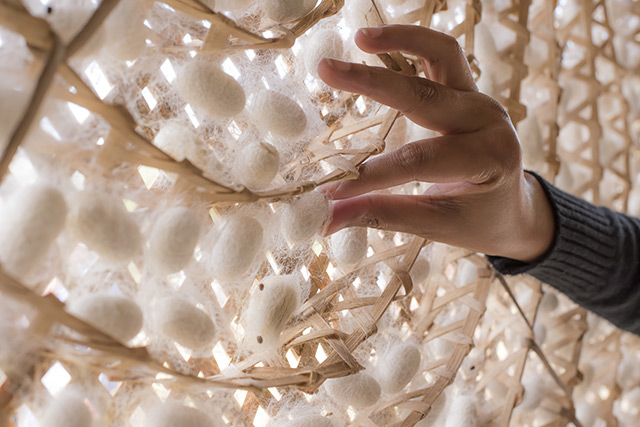“Air-con” clothes? Scientists develop cooling fabric inspired by the comet moth
07/24/2018 / By Edsel Cook

Silkworms may have a new competitor when it comes to producing refreshingly cool and bright-looking silk fabrics. The fibers spun by wild Madagascar comet moths look much more vivid and feel much cooler on the skin. An article in Newswise reports that research engineers have created artificial materials based on these fibers to replicate their cooling and optical properties.
The Columbia Engineering research team reported that comet moth fibers possess interesting one-dimensional nanostructures. These tiny structures not only vent heat but also send light signals and images.
Associate professor Nanfang Yu led the efforts to replicate these nanostructures and their properties. The research team published their findings in the science journal Light: Science & Applications.
Yu said comet moth fibers were the best natural fibers when it came to repelling sunlight. The fibers could even guide light signals or even send images from one end of the fiber to another. They could serve as biomedical materials that would not be rejected by the body of a patient and would dissolve or even get absorbed after their role is fulfilled. (Related: Scientists take super close-up shots of the human bone to understand why they are so strong.)
Metallic fiber spun by comet moth caterpillars can block light
Domesticated silkworms spin threads that look like solid, see-through cylinders in a microscope. In comparison, the fibers spun by comet moth caterpillars have a metallic appearance.
The latter fibers have lots of nano-sized air voids that run along the length of the fibers. They act like mirrors that reflect more than 70 percent of the visible light that hits them. It takes around 10 layers of typical textiles – such as silk – to achieve the same reflective properties as one comet moth fiber.
Furthermore, comet moth fibers can also reflect the infrared spectrum of light, which makes up about 50 percent of sunlight. They can also absorb ultraviolet light. When combined, these properties allow the fibers to block sunlight.
This ability to redirect light comes from the filamentary air voids along the threads. Using “transverse Anderson localization,” the air voids scatter optical light into the cross-section of the fiber. Light is thus restricted to traveling along the fibers.
Study author Norman Shi of Columbia Engineering said the way by which comet moth fibers guided light is different from the one used by undersea fiber-optic cables. It is also the first time transverse Anderson localization has been found in a natural material.
Synthetic version of comet moth fibers can make air-conditioned clothes
Shi, Yu, and the other researchers developed fiber pulling methods that copied how comet moth caterpillars could spin threads with a lot of particulate or filamentary voids. Their synthetic fibers achieved a void density that can reflect around 93 percent of sunlight.
They made the bio-inspired fibers out of both regenerated silk and polyvinylidene difluoride. The first was a natural and bio-compatible material, while the latter is a synthetic substance that can be mass-produced.
Yu said their new fibers do not have the solid core of conventional fibers. Instead, they have engineered nanostructures that allow them to give new optical and thermodynamic properties into fibers.
The new fibers can be used to make ultra-thin “air-conditioned” clothes. Several layers can make an opaque textile that is much thinner than paper. Yet it will not turn translucent when the wearer perspires.
Furthermore, the porous fibers could combine the evaporation of sweat, the air flow between the human body and its surroundings, and the way the body radiated heat outwards for the perfect cooling experience.
The next step for Yu is to raise the number of bio-inspired nanostructured fibers produced by his current process, which uses the spinning method used by the fiber industry.
Read about more scientific breakthroughs on nanostructured materials at Discoveries.news.
Sources include:
Submit a correction >>
Tagged Under:
bio-silk, biomaterial, biomaterials, biotechnology, fabric, fibers, goodtech, innovation, inventions, nanostructures, research, science, silk, synthetic fibers
This article may contain statements that reflect the opinion of the author
RECENT NEWS & ARTICLES
COPYRIGHT © 2017 REAL SCIENCE NEWS





















